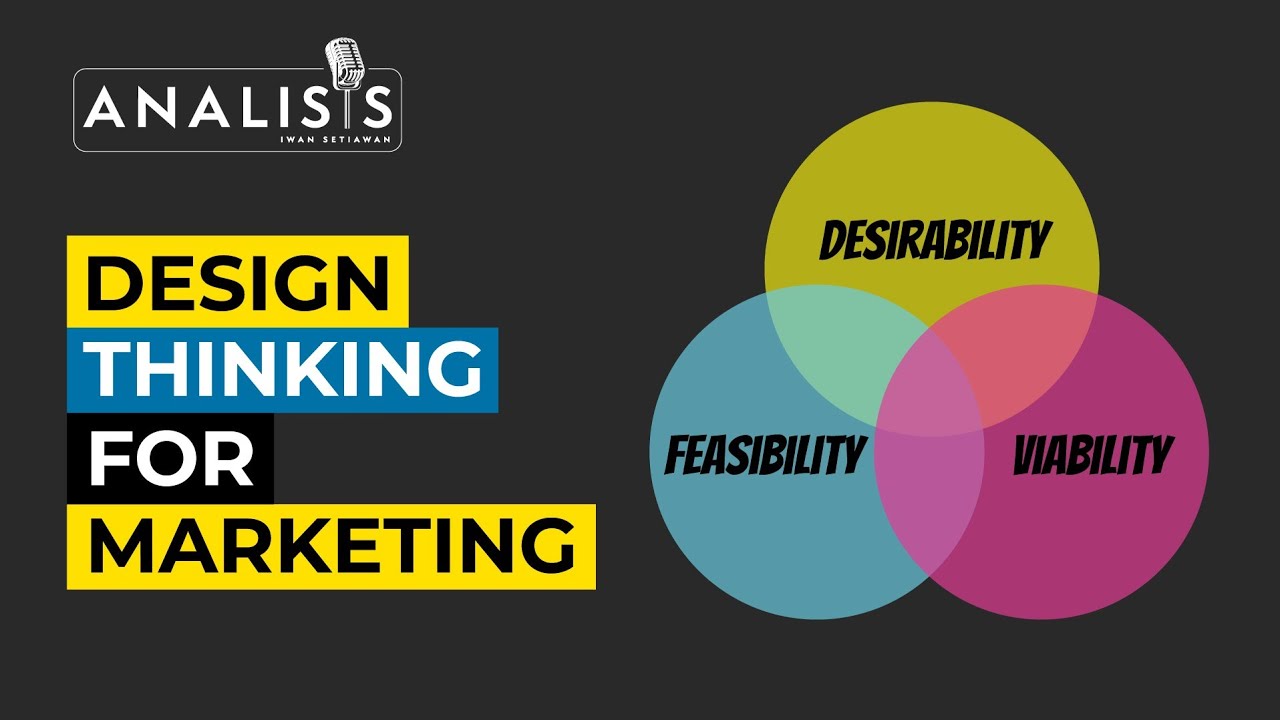Design Thinking Q&A with Clark Kellogg and Stephane Matsushita
Summary
TLDRIn this insightful discussion, design thinking experts Clark Kellogg and Stefan Matsushita join to explore the mindset and process of design thinking, emphasizing the importance of a 'yes and' approach, optimism, and curiosity. They differentiate design thinking from traditional problem-solving methods by its iterative, user-centered process and the focus on finding the problem rather than simply solving it. The conversation also touches on the challenges and strategies of prototyping and testing across cultures, highlighting the need for humility and a continuous learning mindset in innovation.
Takeaways
- 🌟 The most important element of design thinking mindset is the 'yes and' approach and optimism, which encourages looking for the good in solutions and improving them.
- 🔍 Design thinking begins with acknowledging that we don't know the answer, unlike other problem-solving methods that often start with a preconceived notion or hypothesis.
- 💡 Curiosity is emphasized as a vital component of design thinking, driving learning and exploration without judgment.
- 🚀 Design thinking involves a quest for knowledge through research, interviews, and understanding user needs, rather than relying on past solutions.
- 🤔 The process of design thinking is about living in the gray area, focusing on finding the problem rather than just solving it.
- 🌐 When diverging, it's important not to settle for the most obvious answer but to push beyond common sense and explore unconventional ideas.
- 🔄 Prototyping and testing are about learning and iterating, not just proving a hypothesis right, but understanding its true value and potential for improvement.
- 👩👦 The 'ask your mother' approach to testing is about understanding if the user can relate to and comprehend the solution, but it should be expanded to include a broader range of perspectives.
- 🌍 Cross-cultural design thinking requires humility and the recognition that language and cultural differences can be overcome by focusing on shared human experiences and values.
- 🌱 Innovation is a fundamental part of human evolution and progress, and it will continue as we seek to improve and find new values, even when comfort and stability are achieved.
Q & A
What is the most important element of the design thinking mindset?
-The most important element of the design thinking mindset is the 'yes and' attitude combined with optimism. This mindset encourages looking for the good in solutions and thinking of ways to improve them, even if they may initially seem inadequate.
How does Clark Kellogg define the value of curiosity in design thinking?
-Clark Kellogg emphasizes that curiosity is more important than judgment in design thinking. Curiosity drives all work in the field, fueling the learning process. Without curiosity, there is nothing to learn, but with it, there is everything to discover.
How does design thinking differ from other problem-solving methods?
-Design thinking begins by acknowledging that we do not know the answer. It involves a quest for knowledge through research, interviews, and understanding the problems faced by users. Unlike other methods that may rely on pre-existing solutions, design thinking focuses on learning and adapting to the specific context at hand.
What is the key difference between design thinking and traditional problem-solving approaches?
-The key difference is that design thinking focuses on finding the problem rather than just solving it. It involves living in a gray area, exploring beyond the obvious, and embracing the unknown to uncover deeper insights and innovative solutions.
How should one approach diverging when generating ideas in design thinking?
-When diverging, one should start from common points but then push beyond them to explore strange or curious ideas. The goal is to expand beyond common sense and consider possibilities that may not immediately seem like the 'right' answer.
Why can't one just converge on a solution if they already know the answer?
-Even if you think you know the answer from past experience, it's important to explore other potential solutions. The future may require new approaches, and converging too quickly can eliminate a world of possibilities that could lead to better outcomes.
What is the purpose of prototyping and testing in the design thinking process?
-Prototyping and testing help validate hypotheses and potential solutions by learning from the process. It's about understanding whether an idea works and identifying areas for improvement, rather than just proving the solution to be perfect.
How can the 'ask your mother' approach be useful in testing hypotheses?
-The 'ask your mother' approach is a way to quickly gauge the understandability and appeal of a solution with someone who may represent the target user. However, it's important to diversify testing to include actual potential users for more accurate feedback.
What are some challenges of conducting design thinking across cultures?
-Cross-cultural design thinking requires overcoming language barriers and understanding cultural differences in thought processes and feelings. It involves humility, a willingness to learn, and the ability to observe and adapt to the nuances of different cultures.
How can one approach prototyping and testing across cultures?
-Approaching prototyping across cultures involves using methods that transcend language barriers, such as visual or video communication. The goal is to build prototypes that can be tested without relying heavily on verbal explanations.
Will there ever be a point when innovation is no longer needed because humans have reached the maximum level of comfort?
-The panelists do not believe that such a point will come. Innovation is a fundamental part of human evolution and progress. Even when a certain level of comfort is achieved, humans will continue to seek new values and challenges, driving further innovation.
Outlines

このセクションは有料ユーザー限定です。 アクセスするには、アップグレードをお願いします。
今すぐアップグレードMindmap

このセクションは有料ユーザー限定です。 アクセスするには、アップグレードをお願いします。
今すぐアップグレードKeywords

このセクションは有料ユーザー限定です。 アクセスするには、アップグレードをお願いします。
今すぐアップグレードHighlights

このセクションは有料ユーザー限定です。 アクセスするには、アップグレードをお願いします。
今すぐアップグレードTranscripts

このセクションは有料ユーザー限定です。 アクセスするには、アップグレードをお願いします。
今すぐアップグレード5.0 / 5 (0 votes)






